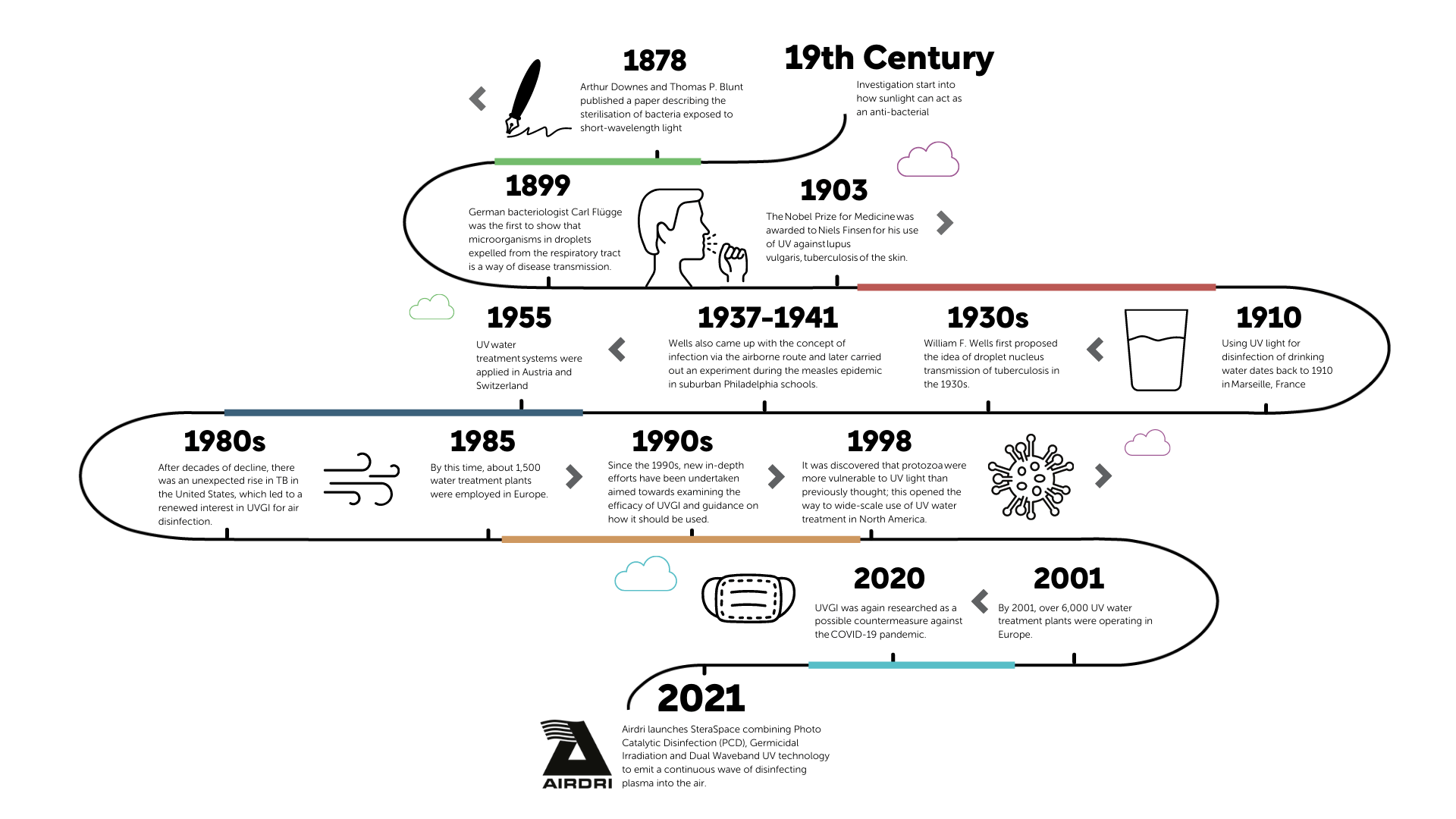The timeline of ultraviolet germicidal irradiation (UVGI), as is used in SteraSpace is quite an interesting one – with peaks and troughs along the way. Starting with the investigations into how sunlight can act as an anti-bacterial in the 19th century right through to UVGI now being used against extensive drug-resistant TB, bioterrorism, influenza pandemics, and severe acute respiratory syndrome.
In the 19th Century, investigations began into how sunlight can act as an anti-bacterial. In 1878, public health experts, Arthur Downes and Thomas P. Blunt published a short paper called “The Influence of Light Upon the Development of bacteria”. The paper claimed that sunlight was inimical to bacteria. Although the authors acknowledged that light was not required for the development of germs, they believed they were the first to systematically study the effects and demonstrate that sunlight killed bacteria.
Towards the end of the 19th century, German bacteriologist Carl Flügge became the first to show that microorganisms in droplets expelled from the respiratory tract is a way of disease transmission.
Further advancements in the science of air sanitisation occurred in 1903, when Niels Finsen was awarded the Nobel Prize for his contribution to the treatment of diseases, particularly lupus vulgaris, with concentrated light radiation, by which he pioneered a new field in medical science. By 1910, the first drinking water UV disinfection system opened in Marseilles, France.

In the 1930s, William F. Wells was the first to propose that droplet nuclei were airborne transmission vehicles, and he later demonstrated that these nearly naked, suspended organisms were highly susceptible to UV light inactivation when exposed to specific wavelengths. Wells also introduced the idea of disease through airborne transmission and conducted an experiment in suburban Philadelphia schools, during a measles outbreak. UVGI not only inactivated infectious organisms in the air, but it also proved the idea that infections can spread through the air, supporting his theory. Following these discoveries, UV light was introduced into society as way to kill bacteria, and by 1955, the first UV water treatment systems were applied in Austria and Switzerland.
After decades of decline thereafter, there was renewed interest in UVGI in the late 1980s due to an unexpected increase in tuberculosis in 1985 and the emergence of various drug-resistant strains. With particular concerns about the homeless, HIV-positive people, and those who work with infected people, UVGI, along with other measures, was proposed as a way to control the spread of the disease. By 1985, around 1,500 UV water treatment plants were employed in Europe.
Since the 1990s, new in-depth efforts have been made with the goal of quantitatively evaluating UVGI effectiveness and safety while also providing advice on how to use UVGI properly. In 1998, the discovery that protozoa were more vulnerable to UV light than previously thought paved the way for UV water treatment to become more widely used in North America and by 2001, over 6,000 UV water treatment plants were operating in Europe.
In more recent times, UVGI was again researched as a possible countermeasure against the 2020 COVID-19 pandemic with positive results. https://www.sciencedaily.com/releases/2020/11/201117113050.htm
In 2021, Airdri has launched its ground-breaking SteraSpace technology, combining Photo Catalytic Disinfection (PCD), Germicidal Irradiation and Dual Waveband UV technology to emit a continuous wave of disinfecting plasma into the air.
Airdri’s Steraspace range includes four units; the SteraSpace Washroom, SteraSpace Washroom+, SteraSpace 20 and SteraSpace 80.
All units eliminate 98.11% of airborne and 99.6% of surface micro-organisms in under 60 minutes and are carefully designed to be suitable for a wide range of environments, including washrooms, offices, medical practices, and care facilities.



